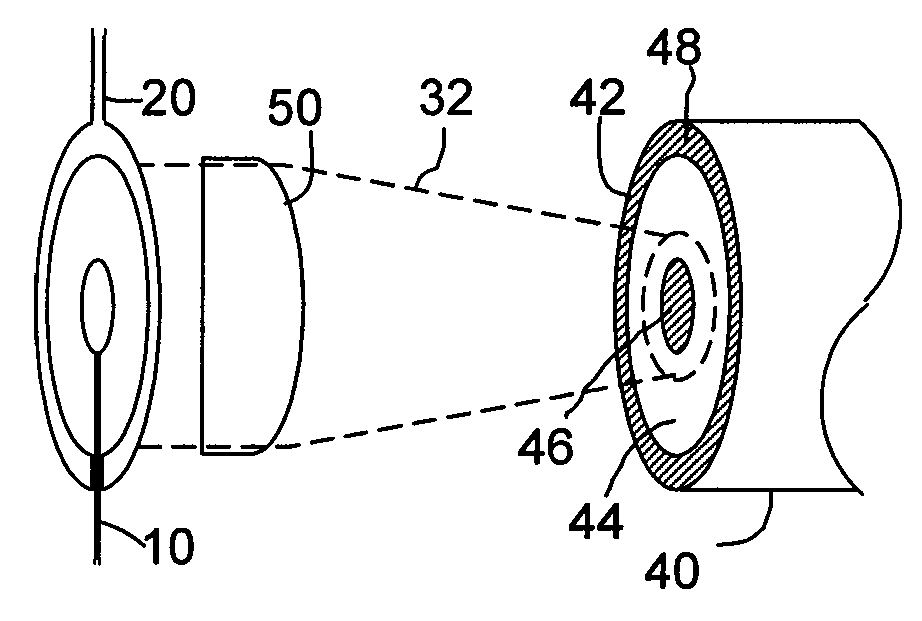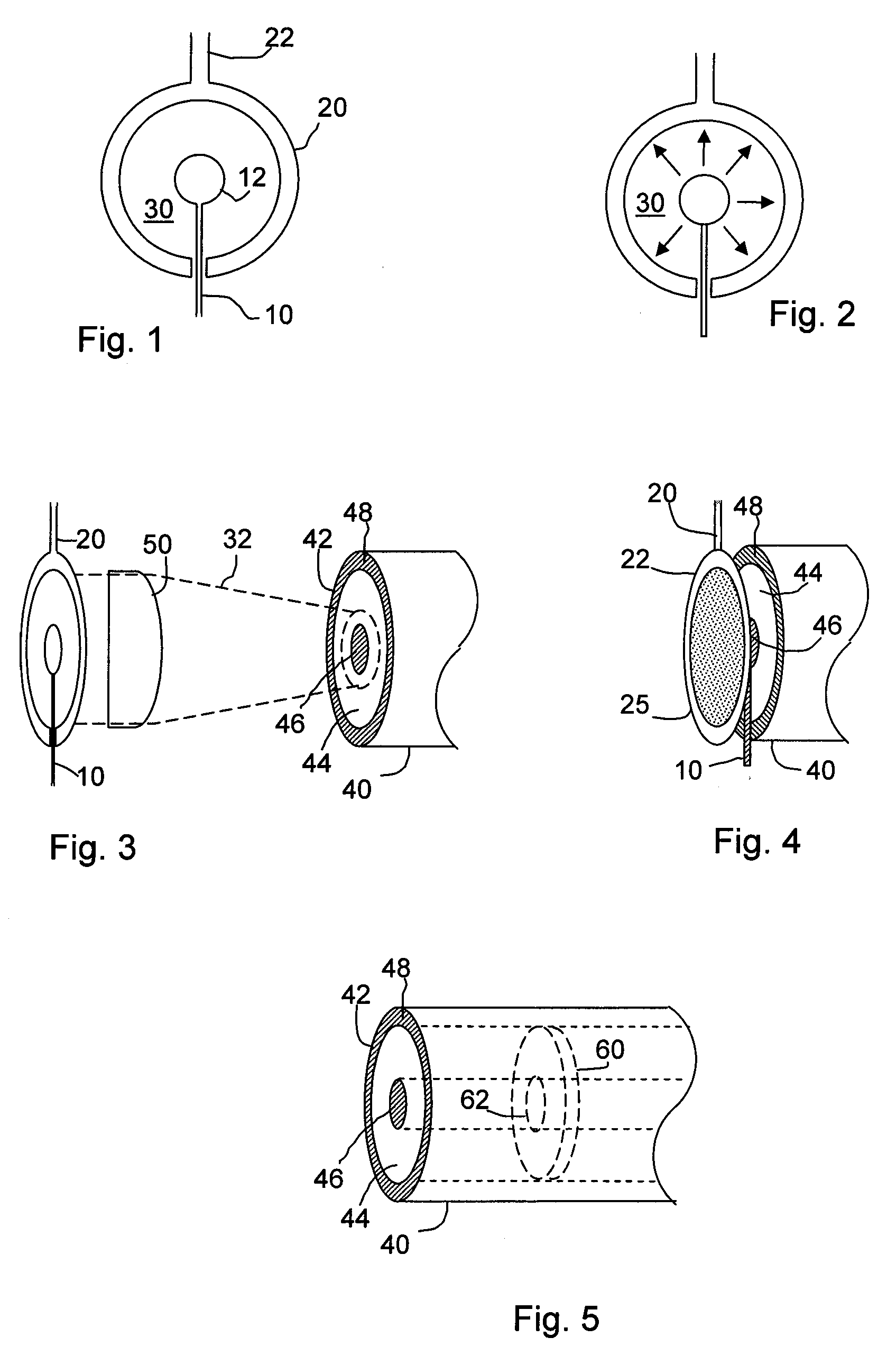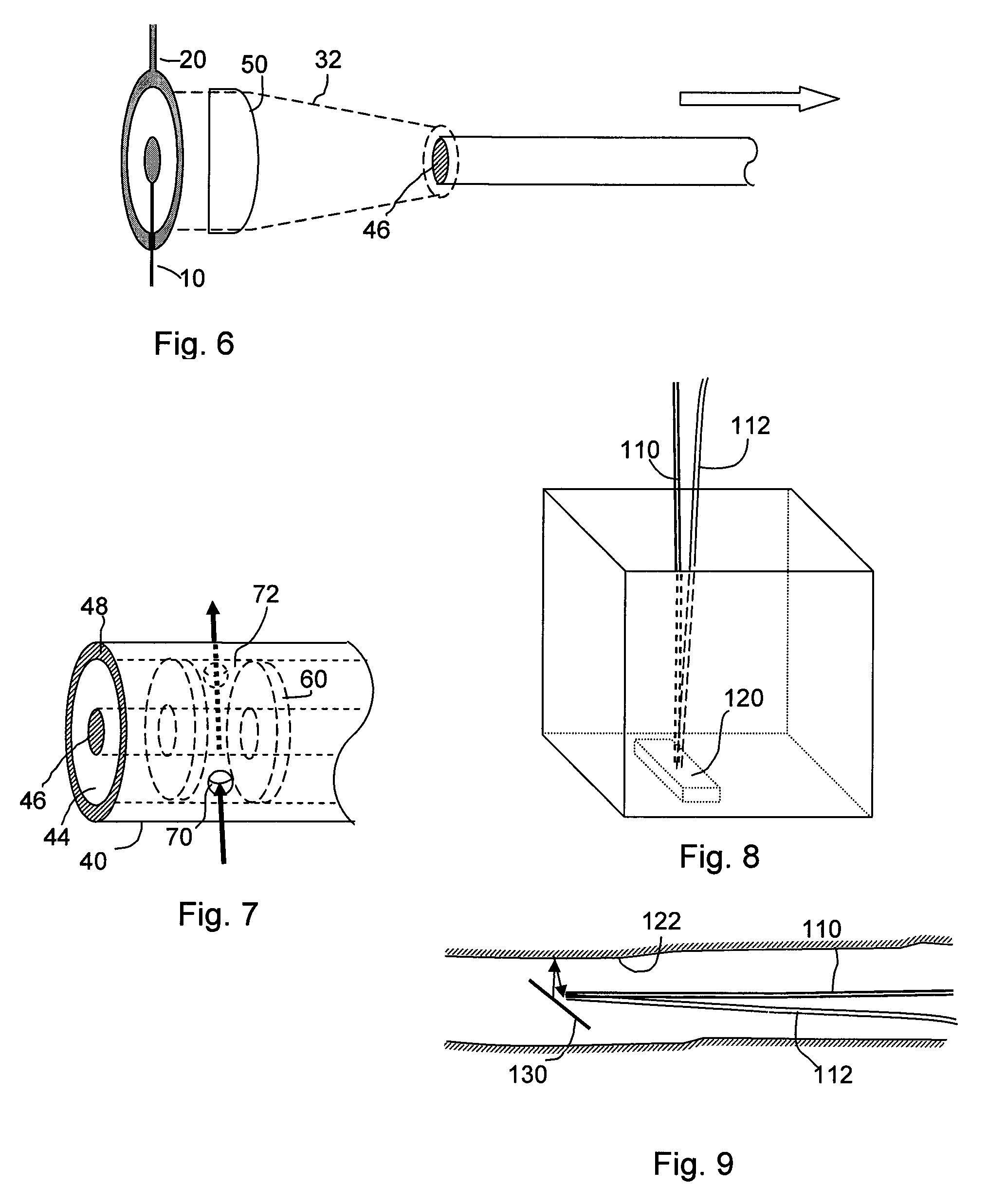Method for coupling terahertz pulses into a coaxial waveguide
a technology of terahertz pulses and coaxial waveguides, applied in waveguides, waveguide type devices, instruments, etc., can solve the problem of extremely low attenuation due to conductivity losses in this configuration, and achieve the effect of effective thz waveguides, efficient coupling of thz energy into waveguides, and simple geometry
- Summary
- Abstract
- Description
- Claims
- Application Information
AI Technical Summary
Benefits of technology
Problems solved by technology
Method used
Image
Examples
Embodiment Construction
[0035]Certain terms are used throughout the following description and claims to refer to particular system components. In the following discussion and in the claims, the terms “including” and “comprising” are used in an open-ended fashion, and thus should be interpreted to mean “including, but not limited to . . . . ”
[0036]As used herein, a waveguide is intended to refer to a device designed to confine and direct the propagation of electromagnetic waves.
Antenna
[0037]In order to efficiently couple radiation into a waveguide, it is desirable to match the spatial pattern (the mode) of the incident radiation to the mode of the waveguide. For a coaxial waveguide, this requires that the incident beam be radially polarized, since this is the characteristic of the waveguide mode with the lowest loss. Such a polarization profile is typically very difficult to generate for free-space radiation, which is why coaxial waveguides have not often been used at high frequencies. The present invention...
PUM
| Property | Measurement | Unit |
|---|---|---|
| diameter | aaaaa | aaaaa |
| diameter | aaaaa | aaaaa |
| diameter | aaaaa | aaaaa |
Abstract
Description
Claims
Application Information
 Login to View More
Login to View More - R&D
- Intellectual Property
- Life Sciences
- Materials
- Tech Scout
- Unparalleled Data Quality
- Higher Quality Content
- 60% Fewer Hallucinations
Browse by: Latest US Patents, China's latest patents, Technical Efficacy Thesaurus, Application Domain, Technology Topic, Popular Technical Reports.
© 2025 PatSnap. All rights reserved.Legal|Privacy policy|Modern Slavery Act Transparency Statement|Sitemap|About US| Contact US: help@patsnap.com



